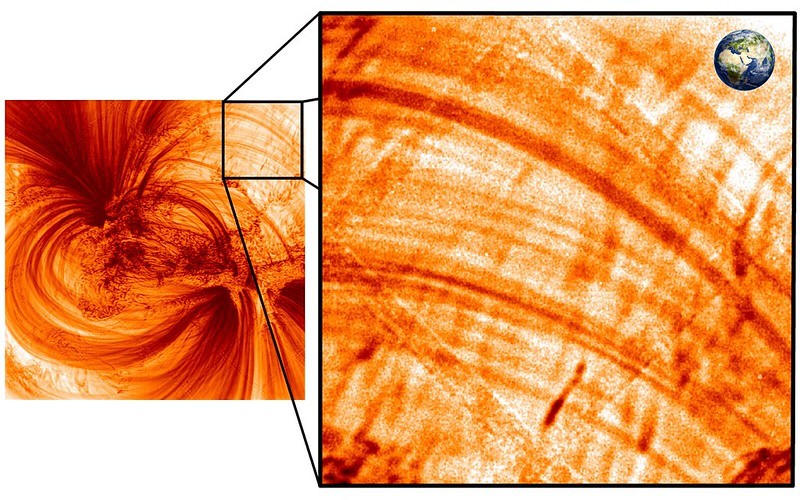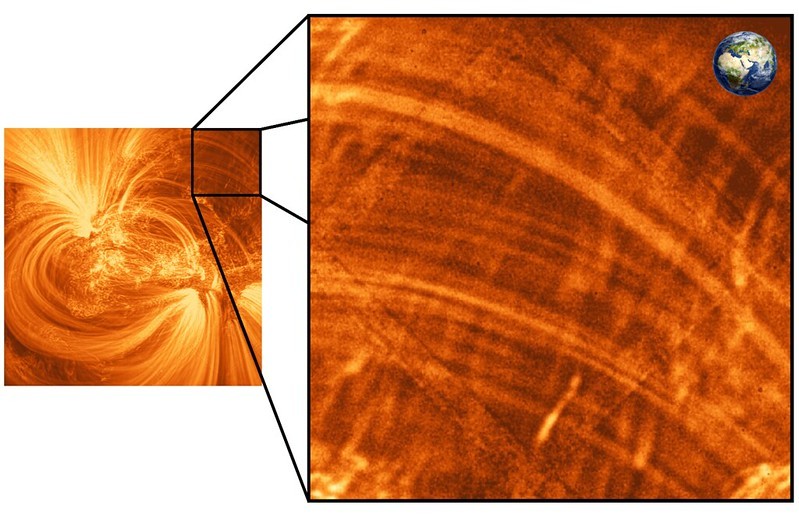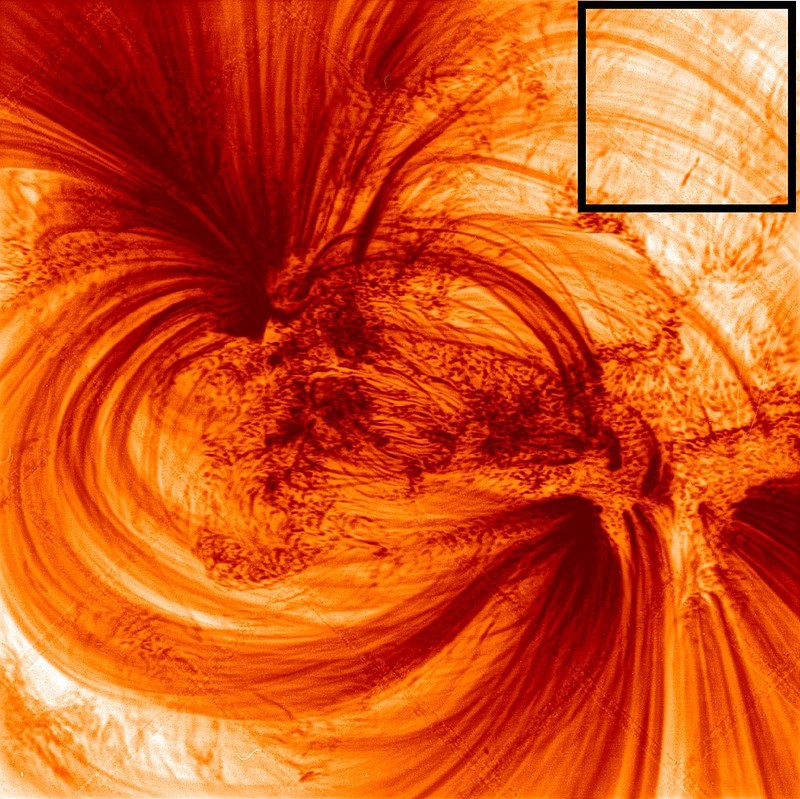12.04.2020

Researchers at the University of Central Lancashire (UCLan) unveil highest-ever resolution images of the Sun from NASA’s solar sounding rocket mission
Newly released images of the Sun have revealed that its outer layer is filled with previously unseen, incredibly fine magnetic threads filled with extremely hot, million-degree plasma. The high-resolution observations have been analysed by researchers at UCLan alongside collaborators from NASA’s Marshall Space Flight Centre (MSFC) and will provide astronomers with a better understanding of how the Sun’s magnetised atmosphere exists, and what it is comprised of.
Until now, certain parts of the Sun’s atmosphere had appeared dark or mostly empty, but new images have revealed strands that are around 500km in width - roughly the distance between London and Belfast - with hot electrified gases flowing inside them.
The ultra-sharp images were taken by NASA’s High-Resolution Coronal Imager (or Hi-C for short), a unique astronomical telescope carried into space on a sub-orbital rocket flight. The telescope can pick out structures in the Sun’s atmosphere as small as 70km in size, or around 0.01% the size of the Sun, making these the highest resolution images ever taken of the Sun’s atmosphere.
The exact physical mechanism that is creating these pervasive hot strands remains unclear, so scientific debate will now focus on why they are formed, and how their presence helps us understand the eruption of solar flares and solar storms that could affect life on Earth.
Professor Robert Walsh, professor of solar physics at UCLan and institutional lead for the Hi-C team added: “Until now solar astronomers have effectively been viewing our closest star in ‘standard definition’, whereas the exceptional quality of the data provided by the Hi-C telescope allows us to survey a patch of the Sun in ‘ultra-high definition’ for the first time.
This is a fascinating discovery that could better inform our understanding of the flow of energy through the layers of the Sun and eventually down to Earth itself.
“Think of it like this: if you are watching a football match on television in standard definition, the football pitch looks green and uniform. Watch the same game in ultra-HD and the individual blades of grass can jump out at you – and that’s what we’re able to see with the Hi-C images. We are catching sight of the constituent parts that make up the atmosphere of the star.”
The international team of researchers are now progressing plans to launch the Hi-C rocket mission once again, this time overlapping their observations with two Sun-observing spacecraft currently gathering further data, NASA’s Parker Solar Probe and ESA’s Solar Orbiter (SolO).
Dr Amy Winebarger, Hi-C principal investigator at NASA MSFC stated: “These new Hi-C images give us a remarkable insight into the Sun’s atmosphere. Along with ongoing missions such as Probe and SolO, this fleet of space-based instruments in the near future will reveal the Sun’s dynamic outer layer in a completely new light.”
Dr Tom Williams, a postdoctoral researcher at UCLan who worked on the Hi-C data said: “This is a fascinating discovery that could better inform our understanding of the flow of energy through the layers of the Sun and eventually down to Earth itself. This is so important if we are to model and predict the behaviour of our life-giving star.”



This research has been published in the Astrophysical Journal.
Quelle: University of Central Lancashire
